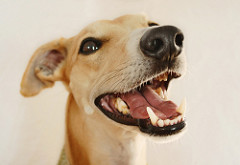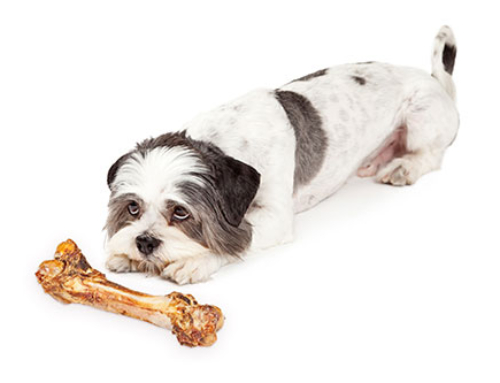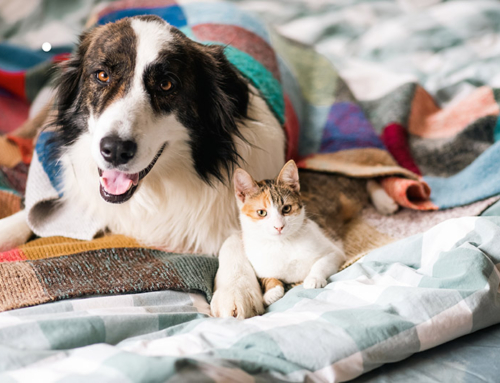MANY HOSPITALS OFFER DISCOUNTS ON DENTISTRIES DURING THIS MONTH
 Like us, dogs and cats have baby teeth that fall out and are replaced by permanent adult teeth but unlike us, they do not have the option of replacing their teeth with dentures so we must take care of their only adult set of teeth.
Like us, dogs and cats have baby teeth that fall out and are replaced by permanent adult teeth but unlike us, they do not have the option of replacing their teeth with dentures so we must take care of their only adult set of teeth.- Oral disease is the number one health problem diagnosed in dogs and cats.
- If you are not brushing your pet’s teeth by age seven about 80% of all pets develop a dental disease, which is 100% preventable
- Severe dental disease can be very dangerous because the bloodstream can carry bacteria from a dental infection to organs such as the heart and kidneys thereby causing life-threatening damage to these organs.
- The truth is that good dental health will help your pet to live a longer and happier life.
- The problem starts when a filmy substance, called plaque, forms along the teeth and gum line and minerals found in the animal’s saliva combine with the plaque and harden to become tarter or calculus. Sometimes the calculus is so severe it will look like rock formations overlying the teeth.
- Gingivitis is an inflammation of the gums caused by billions of bacteria living in plaque. You can’t see the bacteria but it is capable of damaging all of the supporting structures of the teeth. Even the jawbone can be invaded and destroyed.
- Damage to the holding structures of the teeth is called periodontal disease and can be life-threatening as the bacteria can enter the bloodstream causing very dangerous heart and kidney disease.
- Bad breath, excess salivation, pawing at the mouth, oral lesions, trouble swallowing, plaque or tarter attached to the teeth, red and swollen gum tissue, movement of gums away from the base of the teeth, reluctance to chew hard food, abscesses, facial swelling, reluctance to eat and even a runny nose or sneezing.
- Dogs and cats should not have halitosis that is always a sign of ill health
- Brushing your pet’s teeth is the major way to prevent the accumulation of plaque on tooth surfaces and in crevices
- Taking your pet in to have yearly exams by a veterinarian is also important in determining your pets dental health.
- Chew toys such as CET chew and rawhide strips, Kong toys, nylabones, tartar –preventing foods and rinses or gels are other ways to help prevent the build-up of plaque.
- Your veterinarian will get a complete history and may suggest blood work to see if an infection is present in the bloodstream.
- We are supposed to get dental exams every 6 months, floss daily and brush after every meal. So if you think about your pet’s oral hygiene and how nasty your pet’s mouth becomes after years without flossing and brushing you realize how crucial it is to visit your vet at least once a year and to start brushing their teeth
- Since pets don’t spit out the toothpaste you want to buy a product that is made for cats and dogs.
- There are also special toothbrushes that are made for cats and dogs and I would recommend trying these first.
- If your pet is reluctant to have you handle its mouth you can start by dipping your fingers in beef bouillon for dogs or tuna water for cats and gently rub the pets mouth and teeth.
- You need to make the experience as pleasant as possible and try not to restrain your pet too tightly. Make them think of it as being given a treat.
- Once your pet is accustomed to having you play with their mouth try using a small piece of gauze to rub the teeth and gums in a circular motion and again flavor the gauze by dipping it into beef bouillon or tuna water.
- You really only need to worry about the outsides of the top and bottom teeth and you can keep the mouth closed by placing your hand around the animal’s muzzle.
- Once this is working you can try to go to the toothbrush and toothpaste. Keep the sessions short initially like 15 to 30 seconds and try brushing when your pet is rested after its walk or when your watching TV at night.
- You need to brush every day or at least every other day but the absolute minimum is once a week. Anything less than this is not helping your pet.
- After your vet does a thorough oral exam and he determines that your pet needs to have its teeth cleaned they will usually recommend blood work to determine if your pet is healthy for the anesthesia and if there is an infection present.
- Veterinarians use not only safe, short-acting anesthesia, but also sophisticated ultrasonic cleaners and polishers to ensure that both the gums and teeth are thoroughly scrubbed free of plaque above and below the gum line. Dental x-rays are needed to determine if the root is healthy and if the tooth can be saved or needs to be extracted
- Depending on the severity of the dental disease some vets will send your pet home on antibiotics and painkillers in addition to recommending that you start brushing your pet’s teeth.





